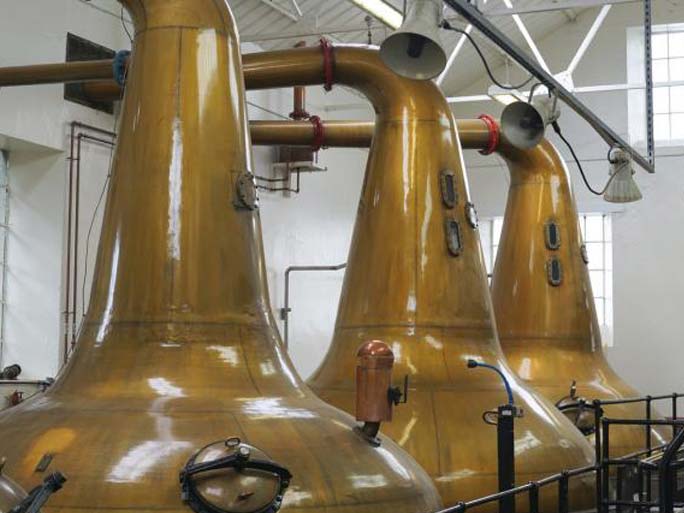DISTILLERIES of all sizes should combine renewable energy with some form of heat or electrical energy storage, according to a new Scottish study.
Whisky is one of the most energy-intensive products in the food and drink production sector – it uses seven times more energy than gin to make.
The industry has made progress towards cutting its carbon footprint. By 2018, over 20% of the industry’s energy use came from non-fossil fuels, compared to under 3% in 2008. But a new report from Heriot-Watt University shows that distilleries must combine renewable energy generation with heat or electrical storage or electrical storage to get closer to net zero targets.
The research was funded through the UK Government’s Greener Distilleries funding scheme.
Dr Wolf-Gerrit Fruh from Heriot-Watt’s Institute of Mechanical, Energy and Process Engineering and a member of the Smart Systems Group said: “We developed a model that can help distilleries of all sizes decide which system will help them make the most of renewable energy.
“Distilleries have installed wind and solar energy, and even ground source heat pumps; this is great progress. They can generate their energy on site for their energy demand, or export surplus electricity to the grid and then reimport it when it’s needed. However, distilleries need a near constant and reliable source of heat energy, and renewable energy is intermittent.”
Dr Fruh modelled the typical energy consumption of a medium distillery that produces about a million bottles of whisky per year.
He added data for additional solar photovoltaic panels with or without wind power. He also included data for an electric battery and heat storage in the form of a high energy density heat battery designed by Sunamp, his research partners. Sunamp’s heat battery uses Phase Change Materials to store energy and release it as heat on demand.
“In most cases, we found that the best combination includes more than one resource: wind turbines and solar panels combined with batteries and heat storage. Island or coastal distilleries of course might have access to wave or tidal energy,” Dr Fruh added.
“We’ve looked at the whole system. Rather than just installing one technology, which is also important, we’re looking at how we can maximise the energy savings from production to bottling and transport. And that applies to any distillery, large or small.”
Jamie Hillis, commercial and industrial project manager at Sunamp, the company behind the heat battery technology, said: “Our thermal storage products provide flexibility to work with a range of low carbon technologies, and by optimising renewables will pave the way for net zero carbon distilleries.”
The team is in discussions with distilleries to install a demonstration system to show how renewable energy, batteries and heat batteries perform on site.


